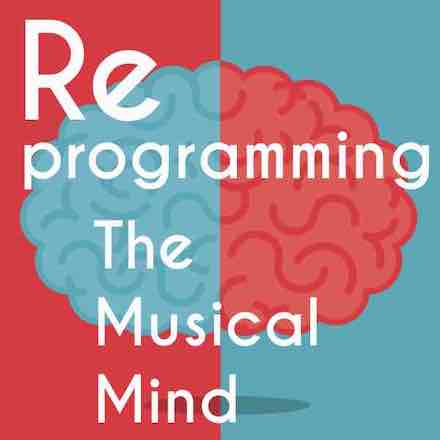Clark Terry is one of the legends of this music. He’s played with every big name in jazz over the last half-century from the likes of Count Basie, Duke Ellington, Thelonious Monk, Oscar Peterson, to Ella Fitzgerald…the list could go on forever. With such a rich performing career spanning over six decades, he continues to play with today’s top musicians and inspire up and coming improvisers.
During school, I was lucky enough to have an impromptu lesson with the trumpet master. One night after a rehearsal for a gig, Clark came in unannounced to the practice rooms at our school looking to impart some wisdom to some aspiring musicians. Before I knew it I was sitting inches from Clark Terry’s bell and he was teaching me a tune by ear.
That sound that I had listened to for years on record was coming out of a horn a foot away from me. It was an experience that I will always remember. I don’t know what was more impressive, the fact that I was sitting down with a jazz legend or that Clark, age of 89, came into the music school practice rooms around 10 at night to hang out with students for free.
Pretty amazing, but then again Clark Terry has been dedicated to educating young jazz musicians for decades. He mentored a young Miles Davis and encouraged Quincy Jones as he was starting out as an arranger and trumpet player. With a track record like that, it’s safe to say that he knows a few things about learning this music.
If you’ve ever had the opportunity to hear Clark speak or attend one of his master classes, you have probably heard him talk about his take on jazz articulation or about the history of the music as he lived it. One topic that he often talks about is how to approach learning improvisation. For Clark Terry, the art of learning jazz can be summed up into three words: Imitation, Assimilation, Innovation.
Clark explains this idea in about 20 seconds in the clip below:
Sounds pretty simple and straight-forward, right? The great thing is that this idea actually is simple and easy to comprehend, however when you get down to business, each step entails some serious in-depth study and dedicated practice time.
Imitation
Imitation: Listening. Learning lines by ear. Transcribing solos. Absorbing a player’s feel, articulation, and time.
This is where it all begins.
Imitation is an integral first step in learning to improvise, but sadly, it’s often overlooked by beginners because scales and theory are immediately thrown in their faces. While you do need to have a solid understanding of music theory, the truth is that scales and chords, no matter how much you memorize them or run them up and down, aren’t going to magically turn into great stylistic improvisations full of long lines and interesting harmonies. To do that you need a model.
The great thing about jazz is that who you choose to imitate is entirely up to you. Maybe you dig a player’s sound and articulation, maybe an unconventional ii-V7 line catches your ear, or perhaps the way a soloist uses space in their phrases may be something you desire in your personal concept. Imitation is not relegated to only harmonic ideas or even to the players on your own instrument. If you like what you hear, learn it and incorporate it into your playing.
By imitating the players you love, you’ll begin to understand the music on a deeper level and begin to see a personal sound develop in your own approach to improvisation. Questions that can’t be answered by music theory or etude books, like how to play longer lines or how to articulate and swing, will reveal themselves as you start to imitate the masters.
Assimilation
Assimilation means ingraining these stylistic nuances, harmonic devices, and lines that you’ve transcribed into your musical conception. Not just mentally understanding them on the surface level, but truly connecting them to your ear and body. This is where the hours of dedication and work come in.
Get into the practice room and repeat these lines over and over again, hundreds of times, until they are an unconscious part of your musical conception. Take these phrases through all keys, all ranges, and all inversions. Begin slowly and incrementally increase the speed until you can easily play them. Don’t feel 
This is not an easy step to complete.
Many of us have taken a lick or pattern in one key and inserted it into our solos as an easy and quick way to sound hip. However, if you’re honest with yourself, it’s clear that this approach is really limiting your playing – not transforming it. Stealing a lick from a book of transcribed solos or learning a line in only one key is not going to cut it. You need to learn these lines and ideas from the record and work them out in all 12 keys. Practice them until you have them down cold and can execute them in the blink of an eye.
A great way to quickly internalize the lines and styles that you’re trying to absorb is to sing them. Sing the rhythms, accents, and the exact pitches so they are first ingrained into your ears – you can even do this outside of the practice room. Remember, when you’ve truly assimilated something, it’s ingrained to the point that you’ll never forget it.
Innovation
Creating a fresh and personal approach to the music. Many young musicians want to skip to this step as soon as they start learning how to improvise. They want to have their own harmonic concept and a unique sound on their instrument right from the get-go. Without a model or in-depth conception of harmony and melody though, it will be much more difficult to create a truly unique approach.
Those who do not want to imitate anything, produce nothing.~Salvador Dalì
Innovation is the direct result of hours upon hours of imitation and assimilation. Take a look at the great innovators that this music has already seen. Each one spent countless hours studying harmony, solos, form, tunes, etc. in order to realize their own personal concept.
Woody Shaw studied the solos of Clifford Brown and Lee Morgan, and incorporated techniques idiomatic to the saxophone into his own improvisation. Coltrane mastered how to play over standards before he delved into the unknown with his quartet. Before you can change history and plot your own course, you have to know a few things about what preceded you.
The steps of imitation, assimilation, and innovation are not limited to “jazz” music. Take any style or concept that resonates with you and incorporate it into your playing through this process. You may like the harmonies of Ravel or the rhythms found in traditional Indian music. Listen to them, figure them out, analyze them, practice them, and finally use them in new and innovative ways in your improvisations.
Clark Terry’s legacy
Clark Terry is one of the masters of this music and a legendary trumpet player, but his legacy in educating young musicians is just as rich as his contributions on trumpet. Even at the age of 90, Clark continues to reach out to younger musicians and share his knowledge of what it takes to learn and live jazz. Everywhere that he goes, he is dedicated to passing on the tradition of this music to the players of today. Check out this video of Clark giving some words of wisdom to one of our friends and former classmates, Justin Kauflin:
The art of learning to improvise lies in three words: Imitation, Assimilation, and Innovation. Take it from Clark Terry, a master who has lived this music and knows what it takes. If you dedicate yourself to this process, you’ll see improvement in your playing immediately and you’ll be on track to becoming the player you’ve always wanted to be.










